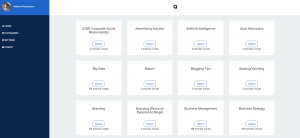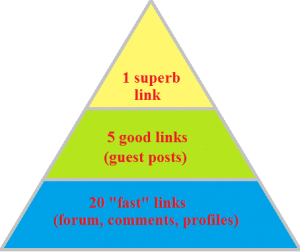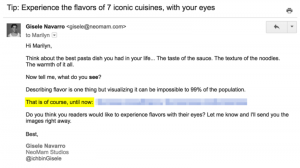A good website design will grow your business; a bad website design will kill it. It is definitely possible to create a website and then watch it suck revenue right out of your company. We wouldn’t like that to happen to you.
Here is our advice for avoiding the top five mistakes.
1.Design for Google as well as people. A brilliant, well-meaning CEO we know guided the design of their new e-commerce website so that customers could more conveniently find what they wanted. But he and his developer ignored the other “customer” that everyone has: Google. Google is the great gate-keeper. If you want traffic, you need to be aware of what Google needs as well as what your customers need when they get to your site. You need to do the following:
- Make a list of the keywords that best describe your business from your perspective (which are not necessarily the ones that customers would use to find you).
- Research the keywords that your customers would use to find you.
- Research the keywords that your competitors are being found for.
- Make sure your pages have enough keyword-rich (but not “keyword stuffed”) copy on them for Google to rank you against your competition.
- Keep adding new copy; Google ranks higher for recency, frequency and length.
- Use checklists whenever possible in your blogs; a good checklist advice article will appear on page one even several years after it first appeared.
- Give people good reasons to go elsewhere on your site; the length of time they spend on your helpful copy and the number of other pages they visit will help your rankings.
- Utilize up-to-date development and data best practices to ensure that machines such as Google’s Site Crawler can consume your website just as well as a human.
2. Pay attention to the basics. A smart consultant came to us once complaining that, although he had plenty of excellent content, he just wasn’t getting traffic. Turns out his incorrectly configured “robots.txt” command was basically telling Google to ignore his whole site (this can be due to a “disallow” command). Go to Google Search Console, paste the page URL in, and click on URL Inspection in the left nav to see if your site is being indexed. But there are other basics. Here is a sampling:
- If the page is not included in Google Search Results, make sure that page is included in your sitemap.
- Include links to other content on your site.
- Include links to content on external high-quality sites.
- Find any pages with a meta name that includes “noindex”—this (obviously) tells Google to ignore the page.
- Be aware of the American Disabilities Act and how your site has to be designed for ADA compliance.
3. Don’t overdo plugins. Plugins have some obvious advantages. They give you specific functions without a lot of custom programming. But if you overuse them, they can cause a number of serious problems:
- Security issues. Plugins are basically small applications, often created by a single developer. But even larger plugins can get hacked, spreading cyber injury to all who use them on their sites. Plus, sometimes a plugin can get old; the developer can get involved in other things and let it go. In any case, the more plugins you have, the less control you have over security on your site, even if you update them regularly to make sure you are taking advantage of the developers’ latest security patches.
- Bloat = slow speed. Google doesn’t like slow pages—and people don’t like them either. Every plugin comes with its own surrounding code “infrastructure,” which adds bloat to your site. The plugin and all its code needs to be loaded, and loading takes time. Your Google rankings and time on site will both be affected by slow load time.
- Conflicts with your CSS, other plugins, or WordPress itself. We’ve seen one plugin update mess up the entire “cascading style sheets” (CSS) structure, which determines how the text on your site is displayed. Every time you introduce a new plugin, and every time you update your plugins to make sure they’re as secure as possible, you open yourself up to these conflicts. This is one of the reasons we have a human being checking all of our clients’ sites every day. One good move in one part of the site can mess up other parts of a site. The goal is to find the problems before your customers do.
4. Give them what they want the minute they come to your site. We’ve been talking a lot lately about “Mindset-Driven Marketing,” where you understand and market to your customers’ Mindset. A Mindset consists of their desires, concerns, and questions when they set out to buy. The very first thing they see when they come to your site should not be boasting about how great you are. It should instead address their most pressing desire, concern, or question. And the rest of the copy on your home page and other pages should continue to do that, providing proof wherever possible via such tools as comparisons, pictures, testimonials, use cases, and reviews.
5. Don’t trust your website to amateurs, including yourself. No offense, but creating a successful website is important and complex. People coming to your site can tell in seconds if it was designed by a professional or an amateur. I’ve even seen sites designed by a professional who then left the updates to an amateur, and even the most casual customer would be able to tell who did what. The amateur parts always look like someone tried to make repairs to a well-built house using cardboard and packing tape.
Only if you design sites for a living is it ok to design your own. Otherwise, find a website developer who:
- Understands your business
- Knows how to implement designs in a consumable format for both people and search engines
- Uses a logical combination of custom code, tools, and appropriate, trustworthy plugins
- Has designed sites similar to yours
- Has been doing it more than a couple of years
- Shows up when required and explains things well
- Meets deadlines
- Follows modern best practices and sets quantifiable goals that can be measured for site traffic analytics and pagespeed
- Comes back with designs that delight you
Your website is more than a digital billboard. Your website is also your store and your salesperson. It’s literally the digital version of your business. It should generate high quality traffic and create revenue for you, rather than something that literally repels both Google and customers.
If you pay heed to this advice, you will shoot ahead of competitors who are still unaware of the common pitfalls.
Digital & Social Articles on Business 2 Community
(14)
Report Post







